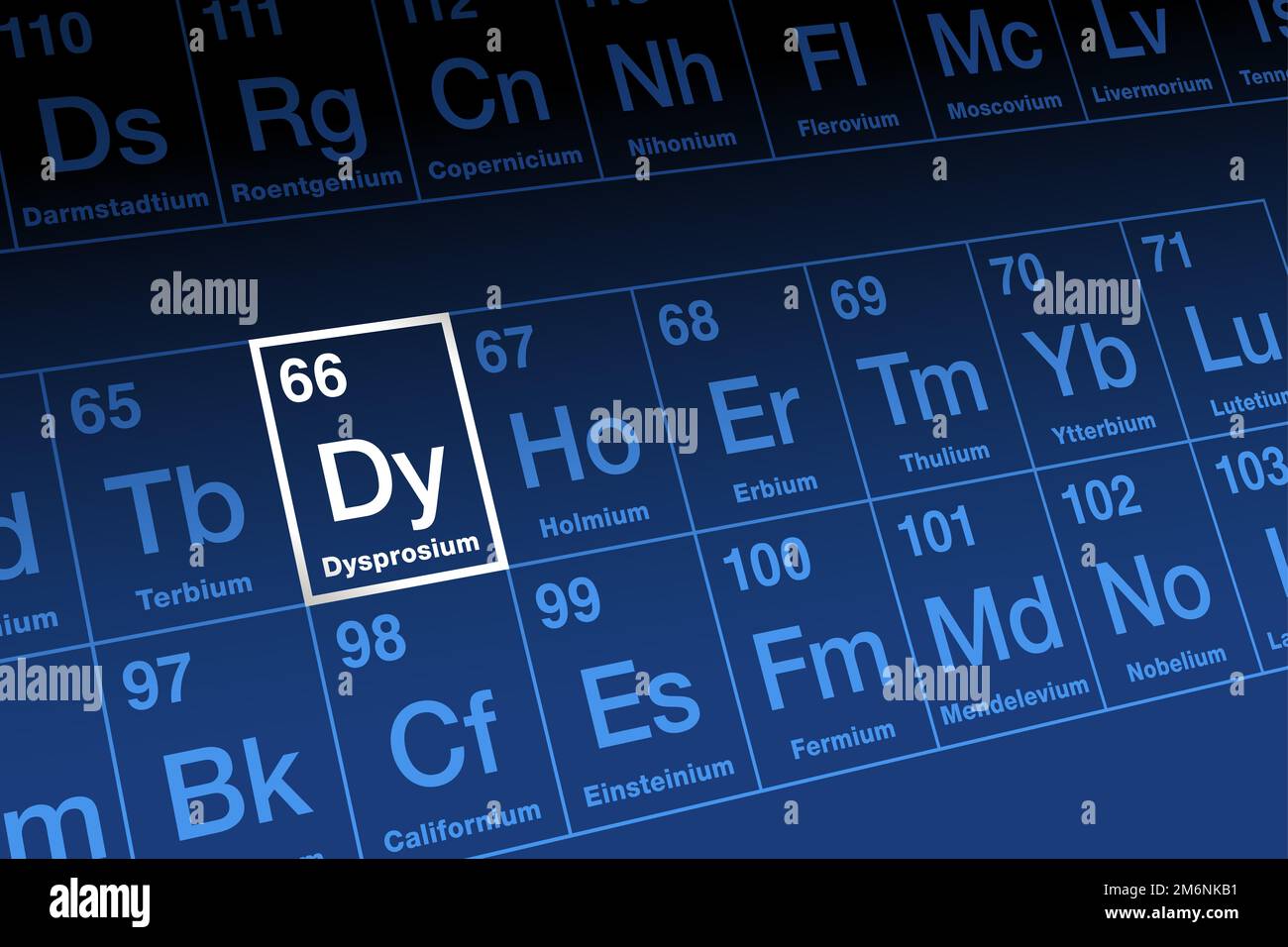Dysprosium: The Rare Earth Element Disrupting The EV Industry

Table of Contents
The Critical Role of Dysprosium in EV Motors
Dysprosium magnets are integral to the performance of electric vehicle motors. Specifically, dysprosium is a key component in neodymium-dysprosium magnets, the powerful permanent magnets that drive the electric motors in most EVs. These magnets are essential for the efficiency and power of electric motors.
- Dysprosium enhances the magnetic strength and thermal stability of neodymium magnets. This means the magnets can generate a stronger magnetic field, crucial for efficient energy conversion.
- Stronger magnets lead to smaller, lighter, and more efficient motors. This translates to improved vehicle performance, increased range, and reduced energy consumption.
- Improved motor efficiency translates to increased range and performance in EVs. This is a crucial selling point for electric vehicles, directly impacting consumer adoption.
- Higher thermal stability ensures reliable motor operation under demanding conditions. This is vital for the longevity and safety of the vehicle's motor, especially during periods of high-power usage.
Without dysprosium, or with significantly less of it, the performance of EV motors would suffer, potentially hindering the widespread adoption of electric vehicles.
The Global Supply Chain Challenge for Dysprosium
The global supply chain for dysprosium presents significant challenges to the EV industry. A major concern is the geographical concentration of dysprosium mining and processing, with China holding a dominant position in the market. This dependence creates several vulnerabilities:
- China controls a significant portion of the global dysprosium supply. This dominance presents a geopolitical risk for countries reliant on Chinese dysprosium for their EV production.
- This dependence creates vulnerabilities to price fluctuations and potential supply disruptions. Any disruption to Chinese mining or processing operations could have a cascading effect on the global EV industry.
- Geopolitical tensions and trade disputes could impact the availability of dysprosium. This underscores the need for diversification of supply sources and robust supply chain strategies.
- Secure and diversified supply chains are crucial for the sustainable growth of the EV sector. This requires international cooperation and investment in alternative sources and responsible mining practices.
Sustainable Sourcing and Responsible Mining Practices
The environmental and social impacts of dysprosium mining must be carefully considered. Current mining practices can lead to habitat destruction, water pollution, and social disruptions in mining communities.
- Mining dysprosium can have significant environmental impacts, including habitat destruction and water pollution. Sustainable mining practices are critical to mitigating these negative consequences.
- Responsible mining practices are crucial to mitigate these impacts. This includes implementing strict environmental regulations, community engagement, and transparent supply chains.
- Promoting recycling and reuse of dysprosium from end-of-life EVs is essential. Recycling can significantly reduce our dependence on primary mining and lessen environmental impact.
- Investing in research and development of alternative materials is crucial for long-term sustainability. This includes exploring alternative magnet compositions and developing more efficient recycling technologies.
The Search for Dysprosium Alternatives and Innovation
The reliance on dysprosium highlights the need for innovation and the exploration of alternative materials and technologies. Significant research efforts are underway to reduce our dependence on this critical rare earth element:
- Researchers are exploring alternative magnet materials with reduced dysprosium content. This includes investigating different rare-earth combinations and exploring entirely new magnet materials.
- Advancements in magnet design may minimize the need for high dysprosium concentrations. Optimizing magnet design could improve efficiency and reduce the amount of dysprosium needed.
- Development of efficient recycling processes is critical to reducing reliance on primary mining. Improved recycling technologies are crucial for recovering dysprosium from end-of-life products.
- Continued innovation is essential to ensure a sustainable future for the EV industry. This requires significant investment in research and development, fostering collaboration between industry, academia, and governments.
Conclusion
Dysprosium’s importance in the electric vehicle revolution cannot be overstated. Its contribution to efficient and powerful EV motors is undeniable, but the challenges related to its concentrated supply chain and environmental impact are significant. Addressing these challenges requires a multi-pronged approach: promoting sustainable sourcing, investing in responsible mining practices, accelerating research into dysprosium alternatives, and developing efficient recycling technologies. Understanding the challenges and opportunities surrounding dysprosium is essential for a successful transition to a sustainable transportation future. Learn more about how you can contribute to a responsible dysprosium supply chain today!

Featured Posts
-
 Papal Conclave Debate Surrounds Convicted Cardinals Voting Eligibility
Apr 29, 2025
Papal Conclave Debate Surrounds Convicted Cardinals Voting Eligibility
Apr 29, 2025 -
 Put A Finger Down Has Tik Tok Misdiagnosed My Adhd
Apr 29, 2025
Put A Finger Down Has Tik Tok Misdiagnosed My Adhd
Apr 29, 2025 -
 Dlyl Zayr Fn Abwzby Nwfmbr 2024
Apr 29, 2025
Dlyl Zayr Fn Abwzby Nwfmbr 2024
Apr 29, 2025 -
 Papal Conclave Debate Over Convicted Cardinals Voting Rights
Apr 29, 2025
Papal Conclave Debate Over Convicted Cardinals Voting Rights
Apr 29, 2025 -
 Exploring Brain Irons Role In Adhd And Age Related Cognitive Changes
Apr 29, 2025
Exploring Brain Irons Role In Adhd And Age Related Cognitive Changes
Apr 29, 2025
